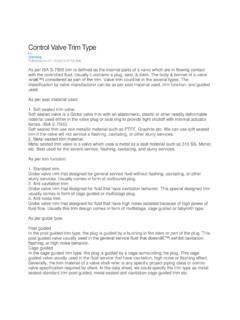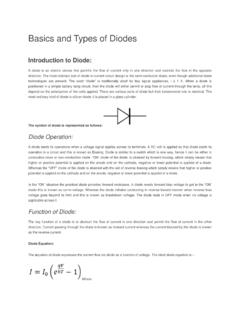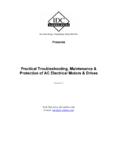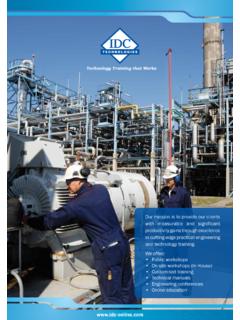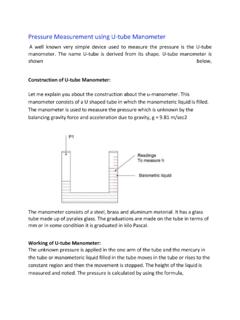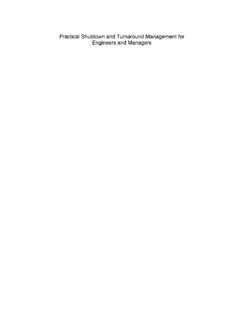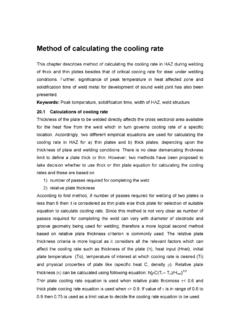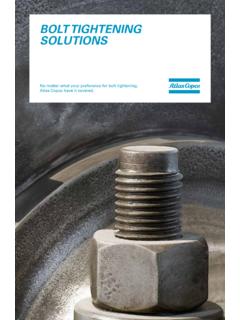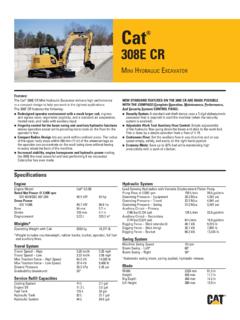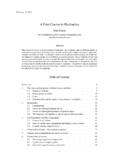Transcription of BASIC HYDRAULIC SYSTEMS AND COMPONENTS - idc …
1 SUBCOURSE EDITION. AL0926 A. BASIC . HYDRAULIC SYSTEMS . AND COMPONENTS . BASIC HYDRAULIC SYSTEMS AND COMPONENTS . Subcourse Number AL 0926. EDITION A. US Army Aviation Logistics School Fort Eustis, Virginia 23604-5439. 4 Credit Hours Edition Date: September 1994. SUBCOURSE OVERVIEW. This subcourse is designed to provide instruction on the concept and operation of the BASIC COMPONENTS of the HYDRAULIC system. It also describes the various COMPONENTS of a typical HYDRAULIC system, their construction and functions, and their relationship to each other. When the term hydraulics is applied to aircraft, it means a method of transmitting power from one location to another through the use of a confined fluid.
2 The functions performed by HYDRAULIC SYSTEMS in aircraft include assisting in flight control, extending and retracting landing gear, positioning flaps, operating hoists, raising and lowering cargo doors, and starting engines. The HYDRAULIC SYSTEMS used in Army aircraft are dependable and relatively trouble-free. The maintenance requirements are small in comparison to the work the system performs. i AL0926. This subcourse is to be completed on a self-study basis. You will grade your lessons as you complete them using the lesson answer keys which are enclosed. If you have answered any question incorrectly, study the question reference shown on the answer key and evaluate all possible solutions.
3 There are no prerequisites for this subcourse. This subcourse reflects the doctrine which was current at the time it was prepared. In your own work situation, always refer to the latest official publications. Unless otherwise stated, the masculine gender of singular pronouns is used to refer to both men and women. TERMINAL LEARNING OBJECTIVE. ACTION: You will demonstrate a knowledge of the BASIC COMPONENTS of the HYDRAULIC system, including the devices which actuate, discharge, and control the flow of HYDRAULIC fluid and those devices which sense, control, and limit HYDRAULIC pressure.
4 CONDITIONS: You will use the material in this subcourse. STANDARD: You must correctly answer 70 percent of the questions on the subcourse examination to pass this subcourse. ii AL0926. TABLE OF CONTENTS. Section Page Subcourse Overview .. i Terminal Learning ii Administrative Instructions .. iv Grading and Certification Instructions .. iv Lesson 1: HYDRAULIC Reservoirs, Filters, Pumps, Accumulators, and Motors .. 1. Practice Exercise .. 19. Answer Key and Feedback .. 22. Lesson 2: BASIC Construction and Operation of HYDRAULIC Actuating Devices, Flow Control, and Directional 25.
5 Practice Exercise .. 43. Answer Key and Feedback .. 46. Lesson 3: HYDRAULIC Pressure-Limiting, Controlling, and Sensing Devices .. 49. Practice Exercise .. 55. Answer Key and Feedback .. 58. Examination .. 61. Appendix: Glossary .. 69. Student Inquiry Sheets iii AL0926. GRADING AND CERTIFICATION INSTRUCTIONS. Examination: This subcourse contains a multiple-choice examination covering the material contained in this subcourse. After studying the lessons and working through the practice exercises, complete the examination. Mark your answers in the subcourse booklet, then transfer them to the ACCP Examination Response Sheet.
6 Completely black out the lettered oval which corresponds to your selection (A, B, C, or D). Use a number 2 lead pencil to mark your responses. When you complete the ACCP examination response sheet, mail it in the preaddressed envelope you received with this subcourse. You will receive an examination score in the mail. You will receive Four credit hours for successful completion of this examination. iv AL0926. LESSON 1. HYDRAULIC RESERVOIRS, FILTERS, PUMPS, ACCUMULATORS, AND MOTORS. STP Tasks: 552-758-1063. 552-758-1071. OVERVIEW. LESSON DESCRIPTION: In this lesson you will learn the BASIC operation of the HYDRAULIC reservoirs, filters, pumps, accumulators, and motors.
7 TERMINAL LEARNING OBJECTIVE: ACTION: After this lesson you will demonstrate knowledge of HYDRAULIC reservoirs, filters, pumps, accumulators, and motors. CONDITIONS: You will study the material in this lesson in a classroom environment or at your home. STANDARD: You will correctly answer all the questions in the practice exercise before you proceed to the next lesson. REFERENCES: The material contained in this lesson was derived from the following publications: AR 310-25, AR 310-50, FM 1-500, FM 1-509, TM 1-1500-204-23 Series, TM 55- 1510-Series (Fixed Wing Maintenance Manuals), TM 55-1520-Series (Rotary wing Maintenance Manuals) and TM 4301A 05 0267 (Air Force).
8 1 AL0926. INTRODUCTION. A means of storing HYDRAULIC fluid and minimizing contamination is necessary to any aircraft HYDRAULIC system. These functions are performed by reservoirs and filters. The component which causes fluid flow in a HYDRAULIC system--the heart of any HYDRAULIC system--can be a hand pump, power-driven pump, accumulator, or any combination of the three. Finally, a means of converting HYDRAULIC pressure to mechanical rotation is sometimes necessary, and this is accomplished by a HYDRAULIC motor. HYDRAULIC RESERVOIRS. The HYDRAULIC reservoir is a container for holding the fluid required to supply the system, including a reserve to cover any losses from minor leakage and evaporation.
9 The reservoir can be designed to provide space for fluid expansion, permit air entrained in the fluid to escape, and to help cool the fluid. Figure 1-1 shows two typical reservoirs. Compare the two reservoirs item by item and, except for the filters and bypass valve, notice the similarities. Filling reservoirs to the top during servicing leaves no space for expansion. Most reservoirs are designed with the rim at the filler neck below the top of the reservoir to prevent overfilling. Some means of checking the fluid level is usually provided on a reservoir. This may be a glass or plastic sight gage, a tube, or a dipstick.
10 HYDRAULIC reservoirs are either vented to the atmosphere or closed to the atmosphere and pressurized. A description of each type follows. Vented Reservoir. A vented reservoir is one that is open to atmospheric pressure through a vent line. Because atmospheric pressure and gravity are the forces which cause the fluid to flow to the pump, a vented reservoir is mounted at the highest point in the HYDRAULIC system. Air is drawn into and exhausted from the reservoir through a vent line. A filter is usually installed in the vent line to prevent foreign material from being taken into the system.
